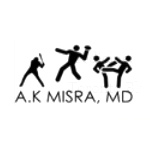As a physician, I am often asked questions about things out of my realm of expertise. Certainly if one is about to give birth, you don’t go to an ophthalmologist or dermatologist.
However, when questions come my way related to either of my two specialties – internal medicine and non-operative orthopedics – I’m always pleased to provide direction.
One area that I see as a common ailment in my day-to-day practice is issues related to muscles, bones and joints. Certainly it is one of most common reasons people see their primary care physicians and show up to the Emergency Room as well as to Urgent Care.
My interest in musculoskeletal medicine came from my interest in sports. And as I advanced in my career and study of medical science, one thing struck me as quite remarkable: how are physical therapists able to get patients back to their pre-injury state so rapidly from a point of significant dysfunction?
To me, physical therapists were near miracle workers. As an intern, I was practically mystified by how they achieved such positive results in such short order.
What I was watching was the end result of a physiological process on the cellular level called mechanotransduction. This word does not connect to anything in a spell check and it may as well be a foreign language.
Specifically, it is a term that describes an intricate process that has developed over millions of years of evolution wherein injured tissues, from soft tissue like muscles and tendons to hard tissues like bone, all use it.
It is a complex process that takes place when there is movement of tissues by one another. The cells glide by each other, flip certain signals on the surface of the injured cell that alerts the nucleus to direct the ribosomes to initiate a “healing protein” of sorts.
This “healing protein” is directed toward repairing the injured tissues. It was German physician, Julius Wolff (1836-1902), who first described mechanotransduction as a process that is induced when cyclic loading was applied to bone.
To keep it easy for myself and the patients I treat, I refer to mechanotransduction as “motion is lotion.” It’s an easy, clever enough catch phrase that patients seem to like and remember well.
So get out there and put that intricate process to use by way of “motion is lotion.” You’ll prevent further injury, repair tissues that need healing, and live longer.
Remember that the American College of Sports Medicine (ACSM) recommends 2½ hours of cardiovascular exercise a week, so get after it. However, also remember that a physical therapist comes into play in instances when injury occurs.
The correct amount of loading and motion to the injured areas needs to be applied and you will likely need some help at the start with a structured rehabilitation process as recommended by a physical therapist.
Although regular exercise is important to our overall health, injuries sustained from repeated action (overuse injuries) are among the most common types of musculoskeletal injuries seen across all ages, so be careful.
Dr. A.K. Misra, MD, is the Medical Director for U.S. HealthWorks in South San Francisco. He specializes in an Internal Medicine and Sports Medicine.








